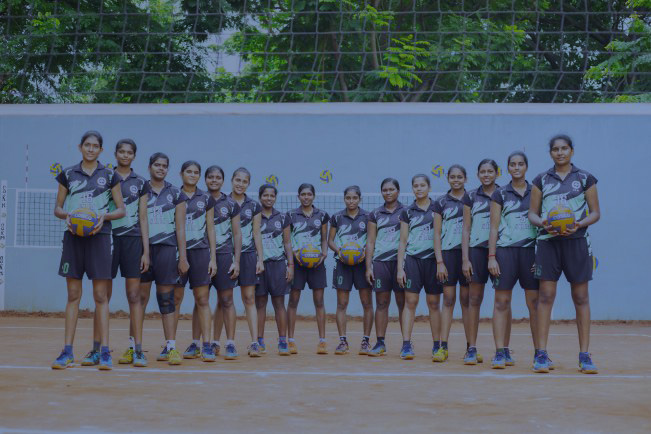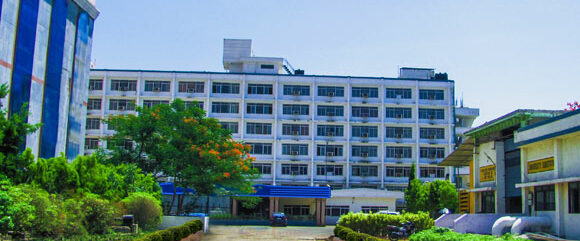1. PREAMBLE
With regard to the Supreme Court Judgment and guidelines issued in 1997 to provide for the effective enforcement of the basic human right of gender equality and guarantee against sexual harassment and abuse, more particularly against sexual harassment at work places, the University Grants Commission (UGC) has issued circulars since 1998, advising the institutions to establish a permanent cell and a committee and to develop guidelines to combat sexual harassment, violence against women and ragging at the universities and colleges. It has further advised the universities to be proactive by developing a conducive atmosphere on the campus, where the status of women is respected and they are treated with compassion. Keeping the above guidelines in view the University has constituted a Committee against Sexual Harassment.
2. SEXUAL HARASSMENT
“Sexual Harassment” includes any unwelcome sexually determined behavior, whether directly or by implication and includes physical contact and advances, a demand or request for sexual favors, sexually-colored remarks, showing pornography or any other unwelcome physical, verbal or non-verbal conduct of sexual nature. “Sexual harassment” shall include, but will not be confined to, the following:
(i) When unwelcome sexual advances, requests for sexual favours, and verbal or physical conduct of a sexual nature are made, either implicitly or explicitly, a ground for any decision relating to employment, academic performance, as extracurricular activities, or entitlement to services or opportunities at the University.
(ii) When unwelcome sexual advances, and verbal, non-verbal and/or physical conduct such as loaded comments, remarks or jokes, letters, phone calls or e-mail, gestures, exhibition of Pornography, lurid stares, physical contact, stalking, sounds or display of a derogatory nature are made with the purpose and/or effect of interfering with an individual’s performance or of creating an intimidating, hostile, or offensive environment.
(iii) When a person uses, with a sexual purpose, the body or any part of it or any object as an extension of the body in relation to another person without the latter’s consent or against the person’s will, such conduct will amount to sexual assault.
(iv) When deprecatory comments, conduct or any such behavior is based on the gender identity/sexual orientation of the person and/or when the classroom or other public forum of the University is used to denigrate/discriminate against a person or create a hostile environment on the basis of a person’s gender identity/sexual orientation.
(v) Eve-teasing, unsavory remarks, jokes causing or likely to cause awkwardness or embarrassment, innuendos and taunts, sexist remarks, unwelcome sexual overtone in any manner such as over telephone (obnoxious telephone calls and the like),touching or brushing against any part of the body and the like, displaying pornographic or other offensive or derogatory pictures, cartoons, pamphlets or sayings, forcible physical touch or molestation and physical confinement against ones will and any other act likely to violate one’s privacy.
3. COMPOSITION OF COMMITTEE
The Committee consists of the following members:
(a) A presiding officer who shall be a women faculty member employed at a senior level (not below a Professor in case of University, and not below an Associate Professor or Reader in case of a College) at the educational institution, nominated by the Executive Authority.
Provided that in case a senior level woman is not available, the Presiding Officer shall be nominated from other offices or administrative units of workplace referred to in sub-section 2(o) of UGC (Prevention, Prohibition and redressal of sexual harassment of women employees and students in higher educational institutions) Regulations, 2015.
Provided further that in case the other offices or administrative units of the workplace do not have a senior level woman employee, the Presiding Officer shall be nominated from any other workplace of the same employer or other department or organization;”
(b) Two faculty members and two non-teaching employees, preferably committed to the cause of women or who have had experience in social work or have legal knowledge.
(c) Three students, if the matter involves students, who shall be enrolled at the undergraduate, master’s and research scholar levels respectively, elected through transparent democratic procedure.
(d) One member from amongst non-government organizations or associations committed to the cause of women or a person familiar with the issues relating to sexual harassment.
(e) Two Non-Teaching Staff.
Note: At least 50% of the members shall be women
4. OBJECTIVES
The objectives of the Committee are:
4.1 To prevent discrimination and sexual harassment against women, by promoting gender amity among students and employees.
4.2 To make recommendations to the authorities for changes/elaborations in the rules for students in the prospectus and the bye-laws, to make them gender just and to lay down procedures for the prohibition, resolution, settlement and prosecution of acts of discrimination and sexual harassment against women, by the students and the employees.
4.3 To deal with cases of discrimination and sexual harassment against women, in a time bound manner, aiming at ensuring support services to the victimized and termination of the harassment.
4.4 Recommend appropriate punitive action against the guilty party to the Vice-Chancellor.
5. POWERS & DUTIES OF THE COMMITTEE
5.1 Preventive:
(i) To create and ensure a safe environment that is free of sexual harassment.
(ii) To create an atmosphere promoting quality and gender justice.
(iii) To publicize the policy widely, especially through prospectuses, notice boards etc.
(iv) To publicize the names and phone numbers of members of the Committees.
To plan and carry out programmes for gender sensitization.
5.2 Remedial:
(i) The mechanism for registering complaints should be safe, accessible and sensitive
(ii) To take cognizance of complaints about sexual harassment, conduct enquiries, provide assistance and redressal to the victims, recommend penalties and take action against the harasser, if necessary.
(iii) To recommend to the concerned authorities about the necessary follow-up action and monitor the same.
(iv) To advise the concerned disciplinary authority to issue warnings duly following the procedures or take the help of the law to stop the harasser, if the complainant consents.
(v) To seek medical, police and legal intervention with the consent of the complainant and with the approval of the competent authority.
(vi) To make arrangements for appropriate psychological, emotional and physical support (in the form of counselling, security and other assistance) to the victim, if so desired.
6. PROCEDURES FOR REGISTERING COMPLAINTS & ENQUIRY
6.1 All complaints must be submitted to the Registrar by the complainant in person in written form/ through email.
6.2 It will be incumbent on the part of Registrar to forward the complaint received to the committee immediately.
6.3 If the complainant wishes she/he can be accompanied by a representative.
6.4 All complaints made must be received and recorded.
6.5 Meetings of the committee will be called by the Member Secretary in consultation with the Chair person and a notice of at least 3 to 5 working days must be given.
6.6 The committee is bound to maintain confidentiality during the time of the enquiry.
6.7 After the report has been finalized, confidentiality should be maintained, if the complainant so desires.
6.8 Quorum for all committee meetings will be one-third of the total membership, and must include at least one member from the complainant’s category as well as, one of the two members nominated from outside the University.
6.9 The Committee will, within ten days of the receipt of a complaint, establish a prima facie case of sexual harassment on the basis of both the definition of sexual harassment and its jurisdiction. Reasons for not pursuing a complaint must be recorded in the minutes and made available to the complainant in writing.
6.10 During the enquiry procedure, the complainant and the accused will be called separately so as to ensure freedom of expression and an atmosphere free of intimidation. The complainant will be allowed to be accompanied by one representative during the enquiry.
6.11 The entire process of enquiry should be completed within one month.
6.12 The report of the Committee in the case of staff of the University will be placed before the Board of Management (BoM) for taking a decision on the recommendations made.
6.13 The report of the Committee pertaining to students will be dealt by the Disciplinary Committee for appropriate action.
6.14 In the case of staff, the disciplinary action could be initiated duly following the procedures and in the light of Supreme Court Judgment and appropriate rules as prescribed by the Government of India in the reported cases of sexual harassment
6.15 In the case of students, disciplinary action could be in the form as mentioned here under:
- Warning
- Written apology
- Bond of good behavior
- Debarring entry into a hostel/ campus for a specific period
- Suspension for a specific period of time
- Withholding results
- Debarring from exams
- Expulsion
- Denial of further admission in the future
- Any other relevant punishment as deemed fit by the Disciplinary Committee.
7. ADDITIONAL PROCEDURE TO BE FOLLOWED
7.1 Once a complaint has been given to the Committee, the complainant should not be made public till the enquiry is completed.
7.2 Filing of a grievance/complaint against the staff shall not adversely affect their status/job, salary/promotion, grades etc.
7.3 Any committee member charged with sexual harassment in a written complaint must step down as member during the enquiry.
7.4 The committee should have names and easy access to groups and/or individuals who can assist by providing legal, medical and/or psychological help to the victims.
7.5 In the case of third party harassment/outsider harassment, the University’s authorities shall initiate action by making a complaint with the appropriate authority.
7.6 Non-adversarial modes of redressal and resolution could also be considered in appropriate cases (Eg., verbal warning, verbal apology, promise of good behavior etc.)














